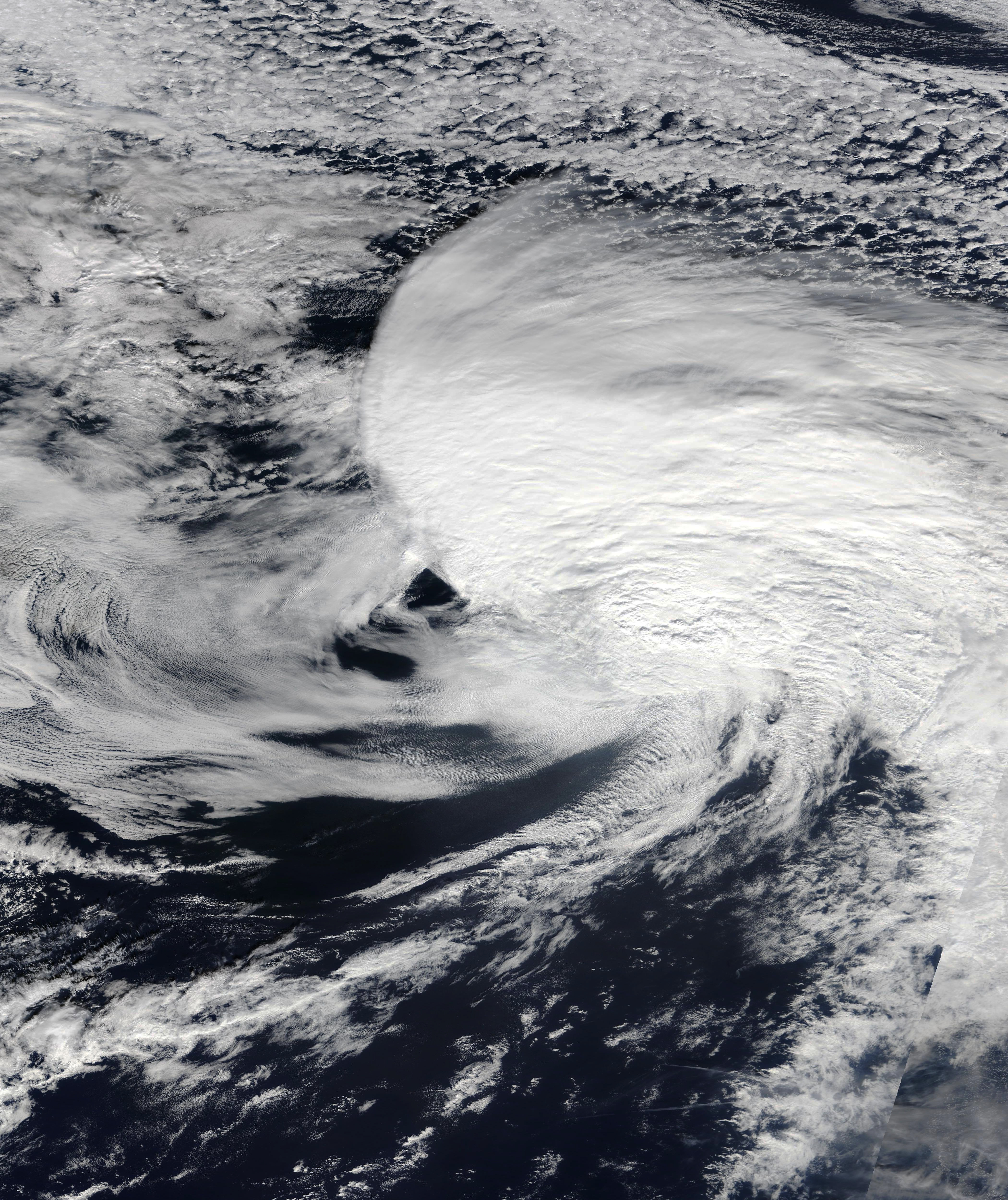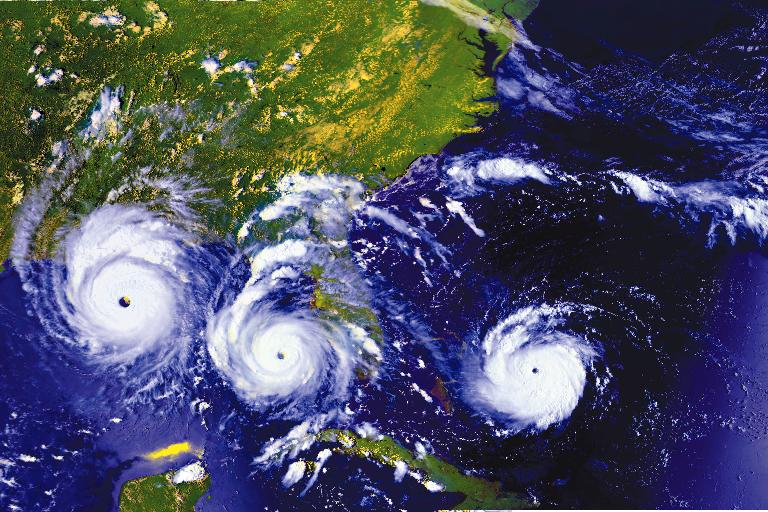|
1935 Atlantic Hurricane Season
The 1935 Atlantic hurricane season was a near-normal Atlantic hurricane season, hurricane season. Altogether, ten tropical cyclones developed, eight of which intensified into tropical storms. Five of those tropical storms strengthened into hurricanes, while three of those reached major hurricane intensity. The season ran from June 1 through November 15, 1935. There were five notable systems in 1935. A weakening late-August hurricane sank numerous ships off the coast of Newfoundland (island), Newfoundland, causing 50 fatalities. In early September, the ''1935 Labor Day hurricane, Labor Day hurricane'' made landfall in Florida twice, the first time as a Category 5 hurricane on the modern day Saffir–Simpson scale, the first Category 5 U.S. landfall on record, resulting in about 490 deaths and $100 million (1935 United States dollar, USD) in damage along its path. It was the most intense Atlantic hurricane on record in terms of barometric pr ... [...More Info...] [...Related Items...] OR: [Wikipedia] [Google] [Baidu] |
Hurricane Dorian
Hurricane Dorian was an extremely powerful and catastrophic tropical cyclone, which became the most intense on record to strike The Bahamas. It is tied with the 1935 Labor Day hurricane for the strongest landfall in the Atlantic basin in terms of maximum sustained winds. It is regarded as the worst natural disaster in The Bahamas' recorded history. With winds peaking at , it was also one of the most powerful hurricanes recorded in the Atlantic Ocean in terms of Maximum sustained wind, 1-minute sustained winds, and the strongest since Hurricane Wilma, Wilma in 2005 Atlantic hurricane season, 2005. Dorian was the fourth named storm, second hurricane, the first major hurricane, and the first Category 5 hurricane of the 2019 Atlantic hurricane season. Dorian struck the Abaco Islands on September 1 with maximum sustained winds of 185 mph (295 km/h), tying with the 1935 Labor Day hurricane for the highest wind speeds of an Atlantic hurricane ever recorded at landfall. ... [...More Info...] [...Related Items...] OR: [Wikipedia] [Google] [Baidu] |
1935 Yankee Hurricane
The Yankee hurricane of 1935 was a rare Category 2 hurricane that affected the Bahamas and South Florida in November. The sixth tropical cyclone and fifth hurricane of the 1935 Atlantic hurricane season, it developed east of Bermuda. It strengthened to a hurricane on November 1, initially posing a threat to the Carolinas. Subsequently, the cyclone turned southwest. It attained its peak intensity on November 3, and it made landfall near Miami Beach on November 4. The hurricane's unusual approach toward Florida and late arrival earned it the nickname of the Yankee Hurricane. The Yankee hurricane was one of three known November hurricanes to make landfall in Florida, with the others being Kate in 1985, and Nicole in 2022. Meteorological history The cyclone originated as an extratropical system east of Hamilton, Bermuda. The system was isolated from a large upper-level trough that stretched from the Lesser Antilles to a low pressure area near the Faroe Islands. A p ... [...More Info...] [...Related Items...] OR: [Wikipedia] [Google] [Baidu] |
Jamaica
Jamaica is an island country in the Caribbean Sea and the West Indies. At , it is the third-largest island—after Cuba and Hispaniola—of the Greater Antilles and the Caribbean. Jamaica lies about south of Cuba, west of Hispaniola (the island containing Haiti and the Dominican Republic), and southeast of the Cayman Islands (a British Overseas Territories, British Overseas Territory). With million people, Jamaica is the third most populous English-speaking world, Anglophone country in the Americas and the fourth most populous country in the Caribbean. Kingston, Jamaica, Kingston is the country's capital and largest city. The indigenous Taíno peoples of the island gradually came under Spanish Empire, Spanish rule after the arrival of Christopher Columbus in 1494. Many of the indigenous people either were killed or died of diseases, after which the Spanish brought large numbers of Africans to Jamaica as slaves. The island remained a possession of Spain, under the name Colo ... [...More Info...] [...Related Items...] OR: [Wikipedia] [Google] [Baidu] |
Honduras
Honduras, officially the Republic of Honduras, is a country in Central America. It is bordered to the west by Guatemala, to the southwest by El Salvador, to the southeast by Nicaragua, to the south by the Pacific Ocean at the Gulf of Fonseca, and to the north by the Gulf of Honduras, a large inlet of the Caribbean Sea. Its Capital city, capital and largest city is Tegucigalpa. Honduras was home to several important Mesoamerican cultures, most notably the Maya civilization, Maya, before Spanish colonization of the Americas, Spanish colonization in the sixteenth century. The Spanish introduced Catholic Church, Catholicism and the now predominant Spanish language, along with numerous customs that have blended with the indigenous culture. Honduras became independent in 1821 and has since been a republic, although it has consistently endured much social strife and political instability, and remains one of the poorest countries in the Western Hemisphere. In 1960, the northern part o ... [...More Info...] [...Related Items...] OR: [Wikipedia] [Google] [Baidu] |
Haiti
Haiti, officially the Republic of Haiti, is a country on the island of Hispaniola in the Caribbean Sea, east of Cuba and Jamaica, and south of the Bahamas. It occupies the western three-eighths of the island, which it shares with the Dominican Republic. Haiti is the third largest country in the Caribbean, and with an estimated population of 11.4 million, is the most populous Caribbean country. The capital and largest city is Port-au-Prince. Haiti was originally inhabited by the Taíno people. In 1492, Christopher Columbus established the first European settlement in the Americas, La Navidad, on its northeastern coast. The island was part of the Spanish Empire until 1697, when the western portion was Peace of Ryswick, ceded to France and became Saint-Domingue, dominated by sugarcane sugar plantations in the Caribbean, plantations worked by enslaved Africans. The 1791–1804 Haitian Revolution made Haiti the first sovereign state in the Caribbean, the second republic in the Americ ... [...More Info...] [...Related Items...] OR: [Wikipedia] [Google] [Baidu] |
1935 Jérémie Hurricane
The 1935 Jérémie hurricane, commonly referred to as the 1935 Haiti hurricane, was a highly destructive and catastrophic tropical cyclone that impacted the Greater Antilles and Honduras in October 1935, killing well over 2,000 people. Developing on October 18 over the southwestern Caribbean Sea, the storm proceeded to landfall (meteorology), strike eastern Jamaica and southeastern Cuba while overwhelming southwestern Haiti in a deluge of rain. The hurricane—a Saffir–Simpson hurricane wind scale, Category 1 at its peak—completed an unusual reversal of its path on October 23, heading southwestward toward Central America. Weakened by its interaction with Cuba, the storm soon regained strength and made its final landfall near Cabo Gracias a Dios in Honduras on October 25. The cyclone weakened upon moving inland and dissipated two days later. Flooding and landslides in Jamaica took their toll on property, agricultural interests, and infrastructure; fruit growers on the island su ... [...More Info...] [...Related Items...] OR: [Wikipedia] [Google] [Baidu] |
Bahamas
The Bahamas, officially the Commonwealth of The Bahamas, is an archipelagic and island country within the Lucayan Archipelago of the Atlantic Ocean. It contains 97 per cent of the archipelago's land area and 88 per cent of its population. It comprises more than 3,000 islands, cays and islets in the Atlantic Ocean, and is located north of Cuba and north-west of the island of Hispaniola (split between the Dominican Republic and Haiti) and the Turks and Caicos Islands, southeast of the U.S. state of Florida and east of the Florida Keys. The capital and largest city is Nassau on the island of New Providence. The Royal Bahamas Defence Force describes the Bahamas' territory as encompassing of ocean space. The Bahama islands were inhabited by the Arawak and Lucayans, a branch of the Arawakan- speaking Taíno, for many centuries. Christopher Columbus was the first European to see the islands, making his first landfall in the "New World" in 1492 when he landed on the ... [...More Info...] [...Related Items...] OR: [Wikipedia] [Google] [Baidu] |
Cuba
Cuba, officially the Republic of Cuba, is an island country, comprising the island of Cuba (largest island), Isla de la Juventud, and List of islands of Cuba, 4,195 islands, islets and cays surrounding the main island. It is located where the northern Caribbean Sea, Gulf of Mexico, and Atlantic Ocean meet. Cuba is located east of the Yucatán Peninsula (Mexico), south of both Florida and the Bahamas, west of Hispaniola (Haiti/Dominican Republic), and north of Jamaica and the Cayman Islands. Havana is the largest city and capital. Cuba is the List of countries and dependencies by population, third-most populous country in the Caribbean after Haiti and the Dominican Republic, with about 10 million inhabitants. It is the largest country in the Caribbean by area. The territory that is now Cuba was inhabited as early as the 4th millennium BC, with the Guanahatabey and Taino, Taíno peoples inhabiting the area at the time of Spanish colonization of the Americas, Spanish colonization ... [...More Info...] [...Related Items...] OR: [Wikipedia] [Google] [Baidu] |
1935 Cuba Hurricane
The 1935 Cuba hurricane was an intense and deadly tropical cyclone which caused devastation across many areas of the western Atlantic, particularly Cuba and The Bahamas, in September and October 1935. The fifth tropical storm and third hurricane of the 1935 Atlantic hurricane season, the storm formed from a tropical depression in the central Caribbean Sea on September 23. The disturbance gradually organized as it moved to the west, and strengthened to tropical storm intensity less than a day after formation and further to a hurricane by September 25. Subsequently, the hurricane curved northward from its initial westward motion. On September 27, the storm reached major hurricane intensity before making landfall near Cienfuegos, Cuba as a modern-day Category 3 hurricane the next day. After passing the island, the hurricane reintensified, and reached a peak intensity with a minimum barometric pressure of at least 945 mbar (hPa; 27.91 inHg) and ... [...More Info...] [...Related Items...] OR: [Wikipedia] [Google] [Baidu] |
Hurricane Michael
Hurricane Michael was a powerful and destructive tropical cyclone that became the first Category 5 hurricane to make landfall in the contiguous United States since Andrew in 1992. It was the third-most intense Atlantic hurricane to make landfall in the contiguous United States in terms of pressure, behind the 1935 Labor Day hurricane and Hurricane Camille in 1969. Michael was the first Category 5 hurricane on record to impact the Florida Panhandle, the fourth-strongest landfalling hurricane in the contiguous United States in terms of wind speed, and the most intense hurricane on record to strike the United States in the month of October. The thirteenth named storm, seventh hurricane, and second major hurricane of the 2018 Atlantic hurricane season, Michael originated from a broad low-pressure area that formed in the southwestern Caribbean Sea on October 1. The disturbance became a tropical depression on October 7, after nearly a week of slow development. By the ... [...More Info...] [...Related Items...] OR: [Wikipedia] [Google] [Baidu] |
Hurricane Andrew
Hurricane Andrew was a compact, but very powerful and devastating tropical cyclone that struck the Bahamas, Florida, and Louisiana in August 1992. It was the most destructive hurricane to ever hit Florida in terms of structures damaged or destroyed, and remained the costliest in financial terms until Hurricane Irma surpassed it 2017 Atlantic hurricane season, 25 years later. Andrew was also the strongest landfalling hurricane in the United States in decades and the List of costliest Atlantic hurricanes, costliest hurricane to strike anywhere in the country, until it was surpassed by Hurricane Katrina, Katrina in 2005 Atlantic hurricane season, 2005. Andrew is one of only four tropical cyclones to make landfall in the continental United States as a Category 5, alongside the 1935 Labor Day hurricane, 1969 Atlantic hurricane season, 1969's Hurricane Camille, Camille, and 2018 Atlantic hurricane season, 2018's Hurricane Michael, Michael. While the storm also caused ... [...More Info...] [...Related Items...] OR: [Wikipedia] [Google] [Baidu] |




